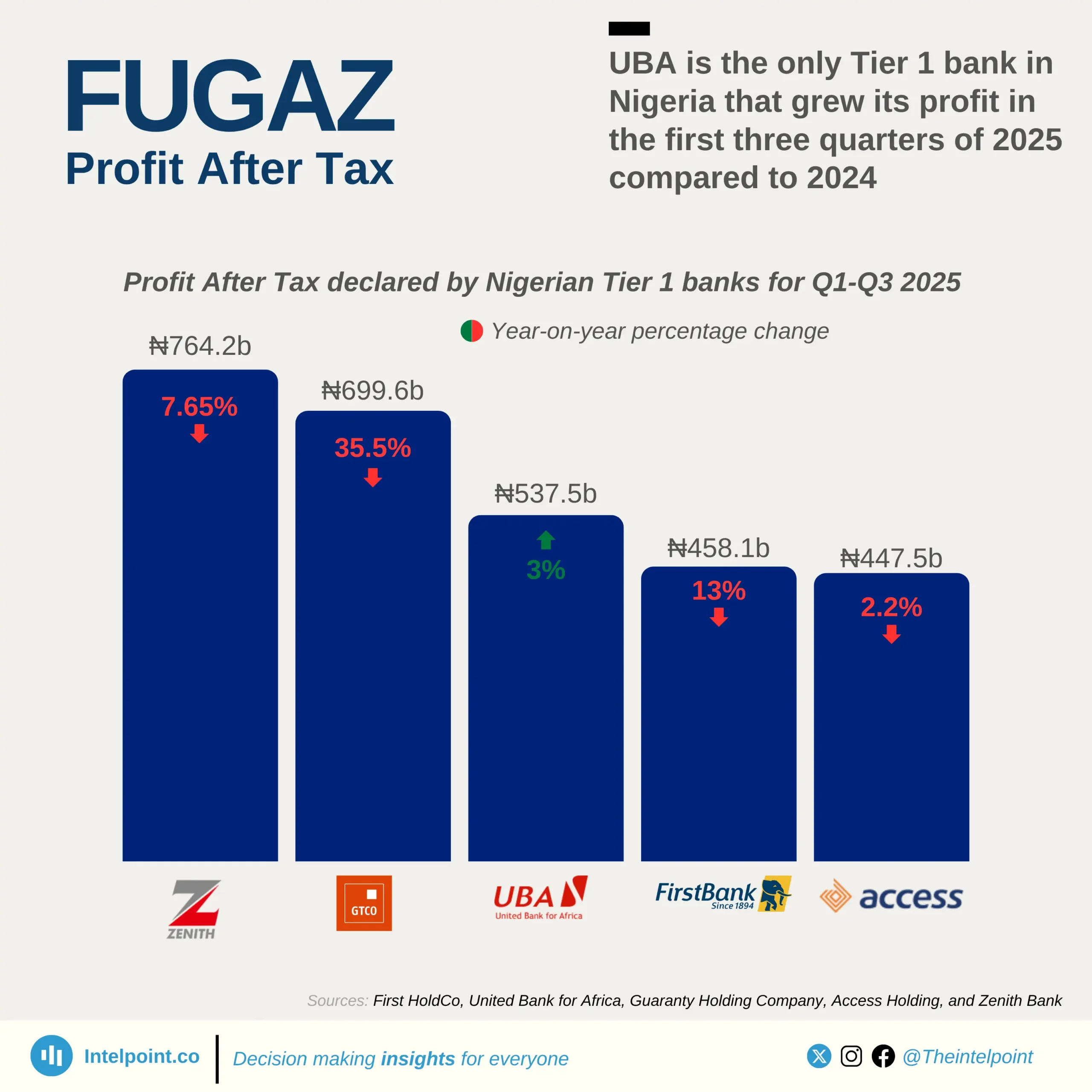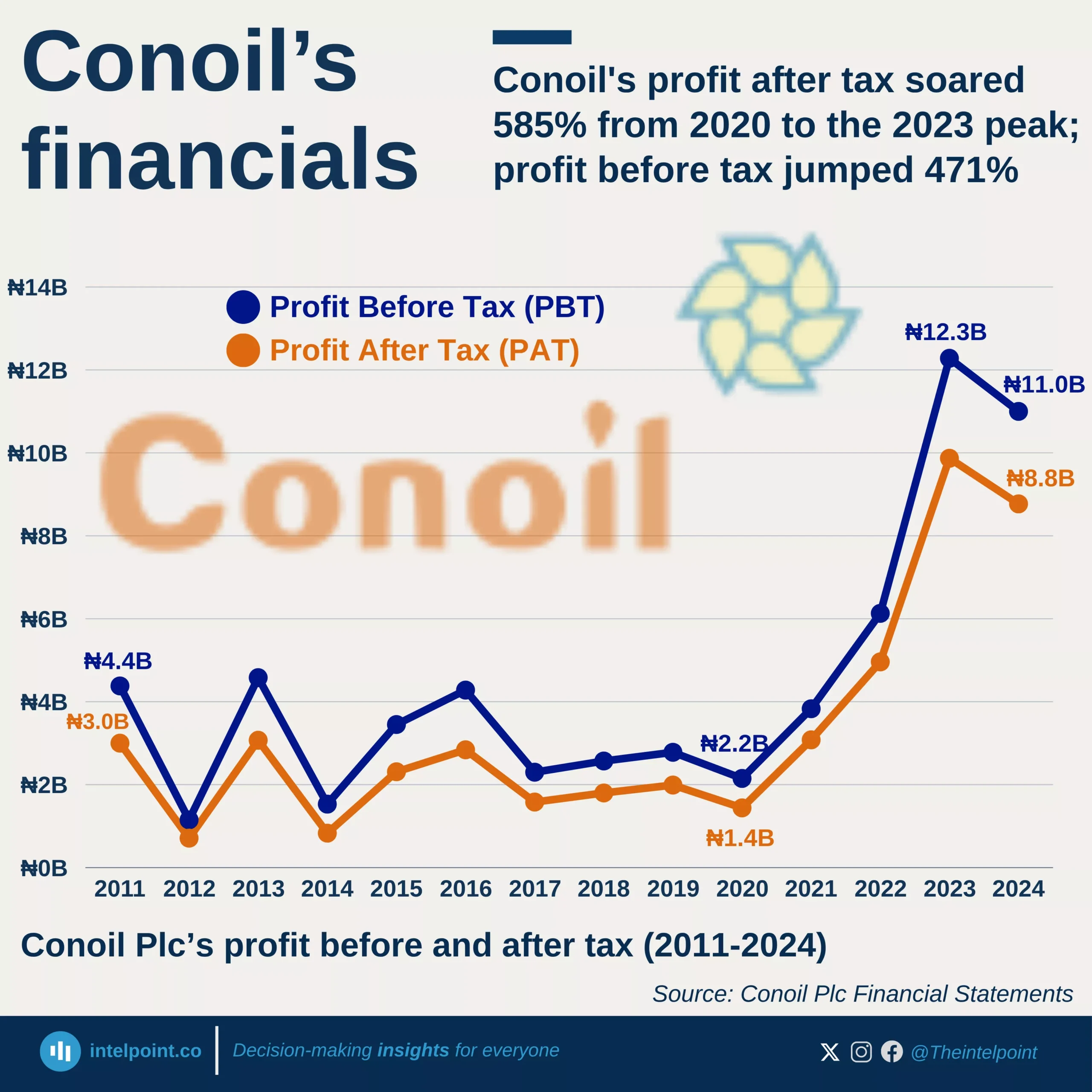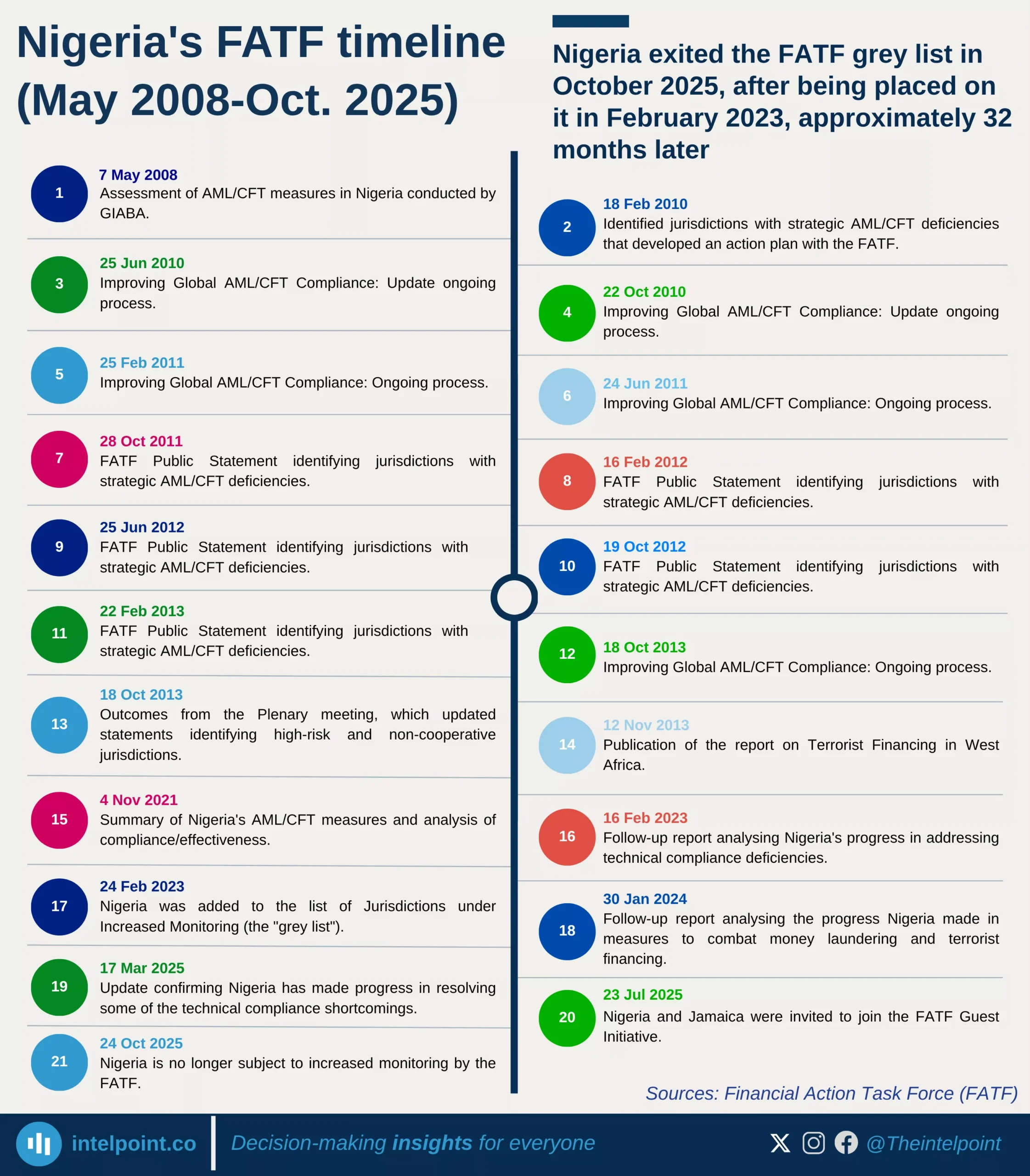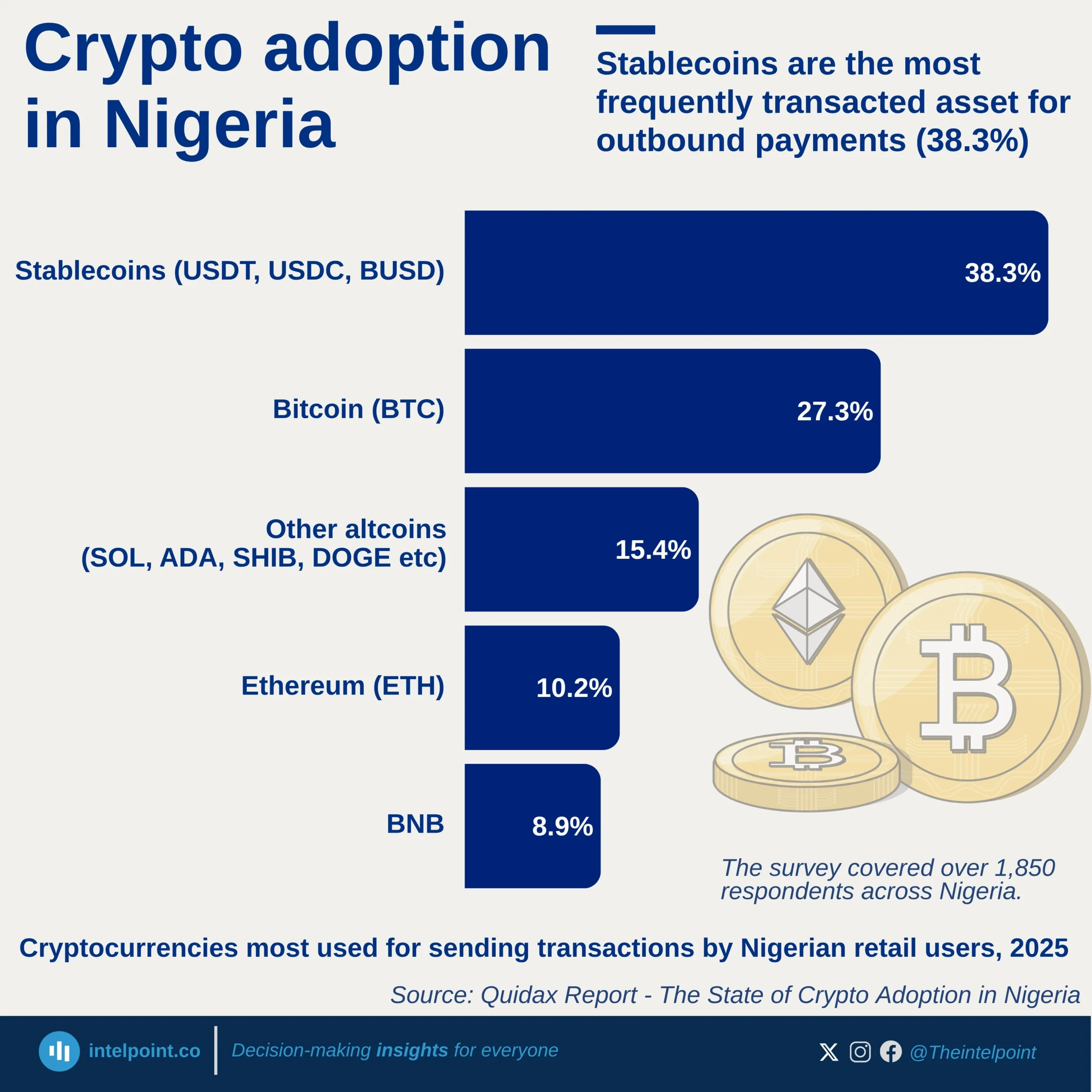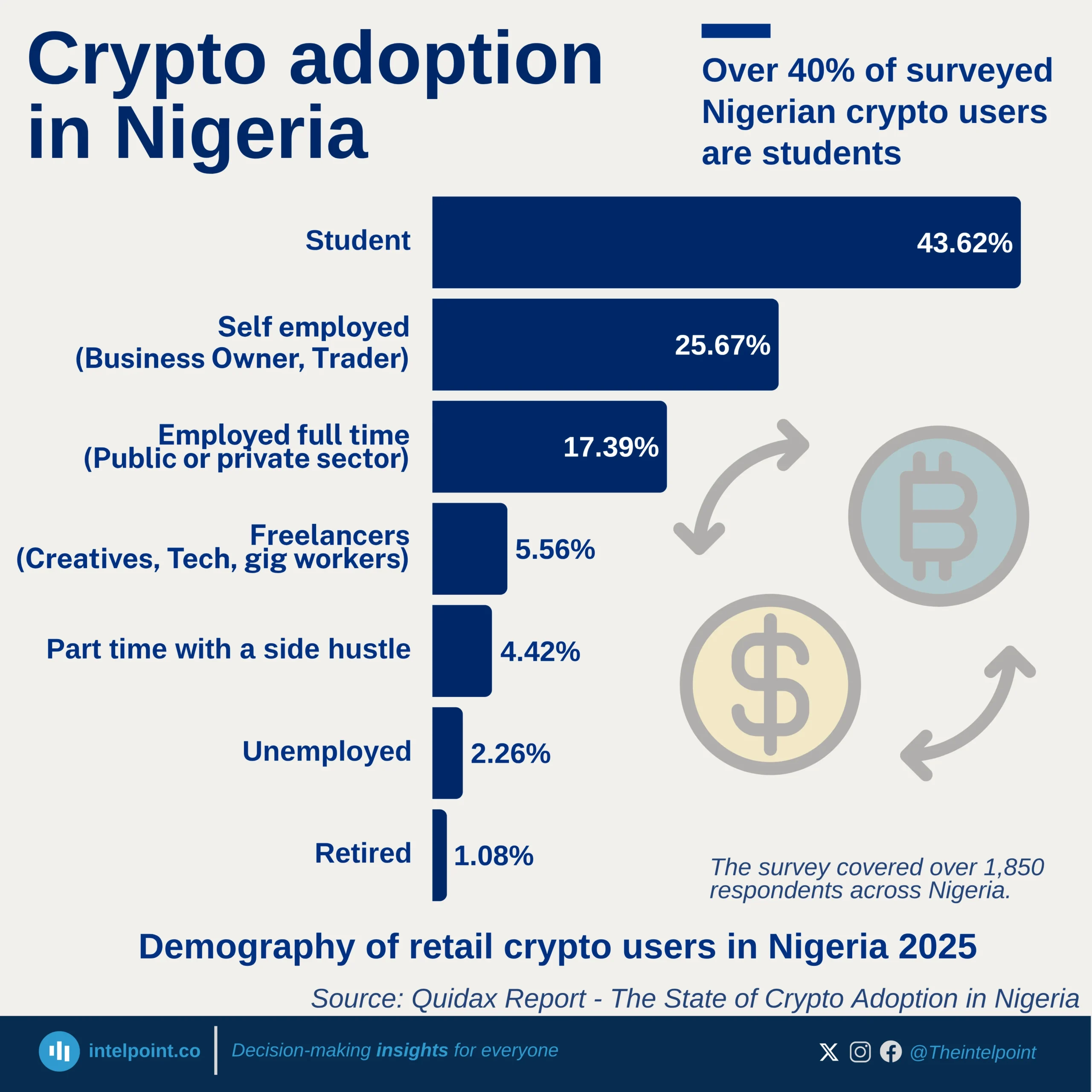Twelve Nigerian banks listed on the Nigerian Exchange Group (NGX) reported a total profit of ₦3.42 trillion in 2023, with all banks making a profit and seeing increases from 2022. The top four banks — Zenith Bank, Access Holdings, UBA, and GTCO — contributed 71% of this amount. Zenith Bank saw a 202% increase from the previous year and led the way with ₦676.9 billion, while Access Bank recorded the highest increase in profits (307%). Jaiz Bank made the least profit (₦11.2 billion) followed by Sterling Bank (₦21.6 billion) and Wema Bank (₦36 billion).

